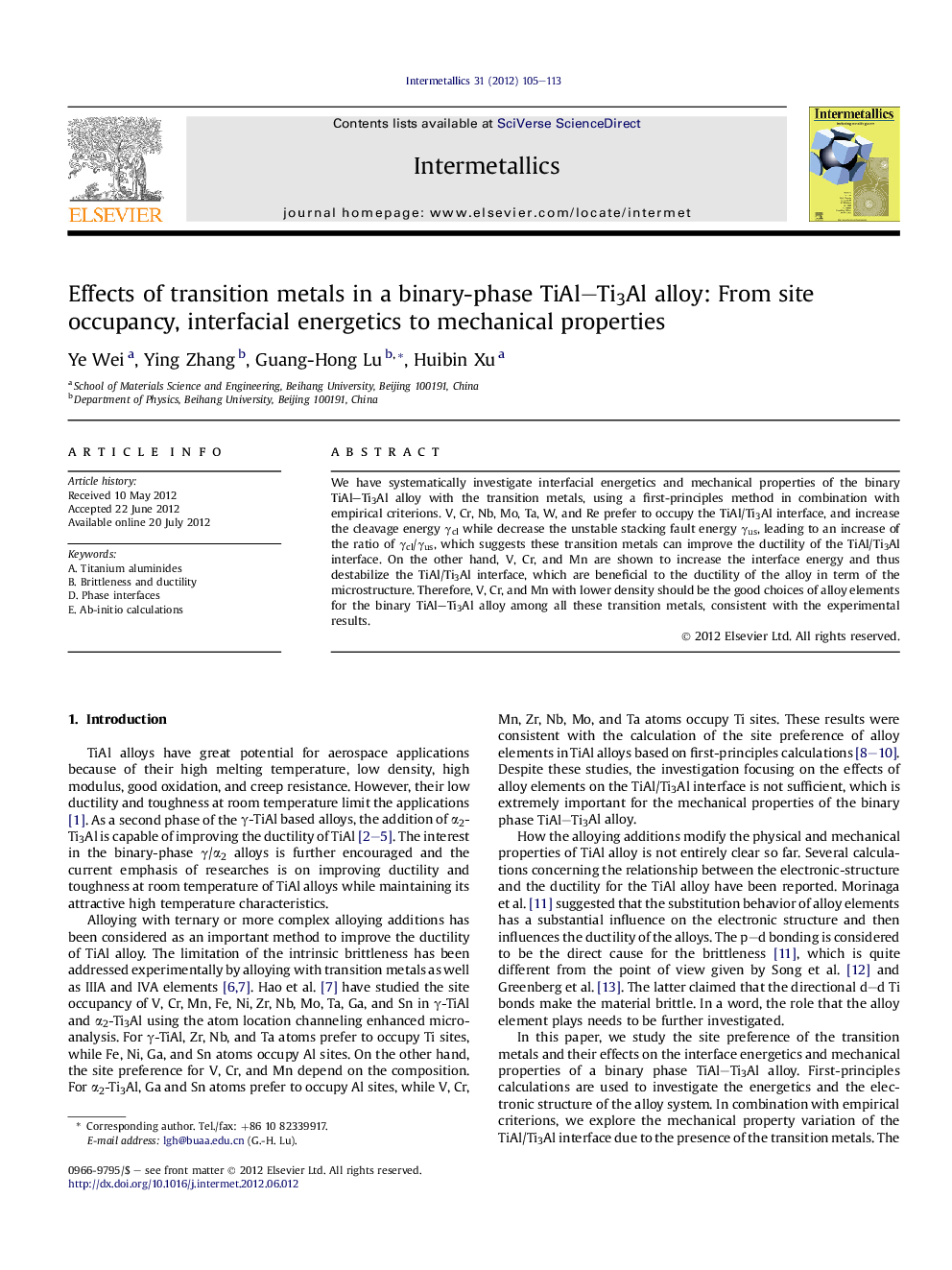| Article ID | Journal | Published Year | Pages | File Type |
|---|---|---|---|---|
| 1600359 | Intermetallics | 2012 | 9 Pages |
We have systematically investigate interfacial energetics and mechanical properties of the binary TiAl–Ti3Al alloy with the transition metals, using a first-principles method in combination with empirical criterions. V, Cr, Nb, Mo, Ta, W, and Re prefer to occupy the TiAl/Ti3Al interface, and increase the cleavage energy γcl while decrease the unstable stacking fault energy γus, leading to an increase of the ratio of γcl/γus, which suggests these transition metals can improve the ductility of the TiAl/Ti3Al interface. On the other hand, V, Cr, and Mn are shown to increase the interface energy and thus destabilize the TiAl/Ti3Al interface, which are beneficial to the ductility of the alloy in term of the microstructure. Therefore, V, Cr, and Mn with lower density should be the good choices of alloy elements for the binary TiAl–Ti3Al alloy among all these transition metals, consistent with the experimental results.
Graphical abstractWe show that V, Cr, Nb, Mo, Ta, W, and Re prefer to occupy the TiAl/Ti3Al interface, while Mn, Fe, Co, and Ni prefer to occupy the TiAl bulk. All the interface preference transition elements increase the cleavage energy γcl and decrease the unstable stacking fault energy γus, leading to an increase of the ratio of γcl/γus with the order of Re > Mn > V > Cr > Mo > W > Nb > Ta, which suggests these transition metals can improve the ductility of the TiAl/Ti3Al interface.Figure optionsDownload full-size imageDownload as PowerPoint slideHighlights► The presence of the Ti3Al phase can improve the ductility of the TiAl alloy. ► V, Cr, Nb, Mo, Ta, W, and Re prefer to occupy the TiAl/Ti3Al interface. ► These transition metals can decrease the stacking fault energies. ► These transition metals can increase the cleavage energy of the TiAl/Ti3Al interface. ► These transition metals can increase the ductility of the TiAl/Ti3Al interface.
